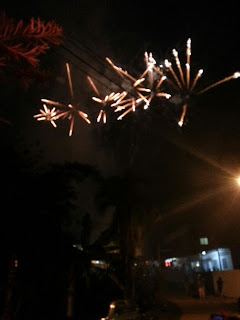Late Saturday morning, I watched children go down the snow-covered streets with sleds as text messages started to stream in from my family. It was approaching midnight of Chinese New Year in Malaysia, where my family returned every year to reunite with my father’s siblings and their families.
A little past noon, pictures of fireworks, firecrackers and bonfires came in.

Then there’s the burning of paper offerings. Every year, there would be a huge stack of paper ‘money’ to fold and stuff in a paper ‘house,’ which would be lit at an auspicious time. There are some beliefs that when paper models of real-world items, such as money, houses, clothes and cars, are burnt, they will arrive in other worlds for the gods and the ghosts. During Chinese New Year, we burn stuff for the gods to please them for the rest of the year. The burning bonfires are usually almost as tall as I am, and we have to stand back to get away from the heat.
But during the seventh month of the lunar year, the amount of paper products burnt for the ghosts is unbelievable. Huge bonfires serve to transmit the offerings, even in Singapore (the fires are contained in a large can). The same happens during funerals; when my grandfather passed away, we burnt a paper mansion, lots of paper money and paper clothes, several paper cellphones and other electronic devices, and several more miscellaneous items.
More importantly, I wonder how much carbon gets released into the atmosphere every festival. I wonder if it’s only carbon that is released; paper money usually has gold and silver paint that sticks to your fingers as you fold it. And, I wonder if China does the same thing as Singapore and Malaysia. Perhaps this is a research project somewhere – ‘The Carbon Dioxide Emissions from Practicing Chinese Traditions.’
But then again, if climate change went up against these deep-rooted traditions, who knows what sort of debate we’ll get into?
